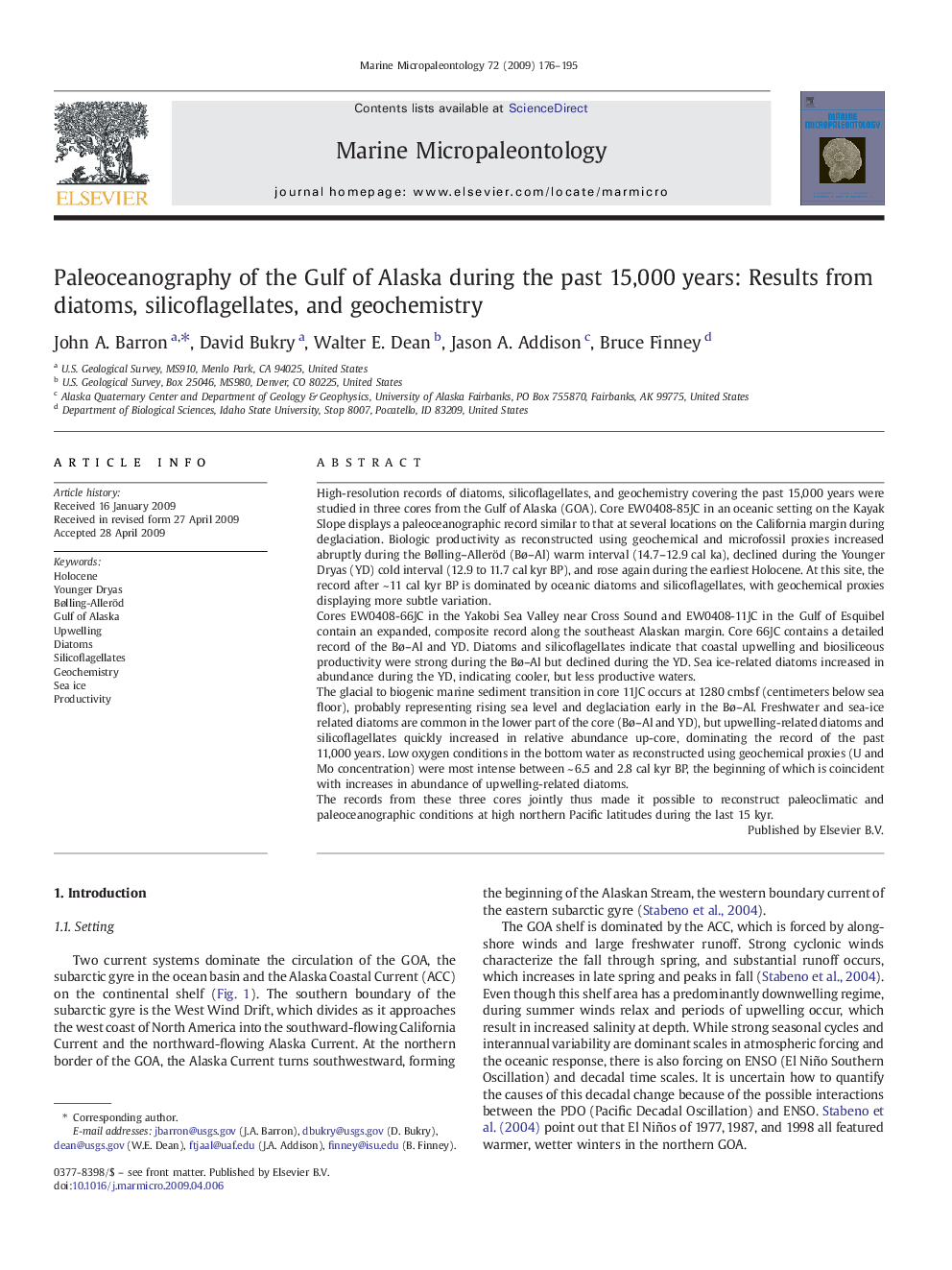| کد مقاله | کد نشریه | سال انتشار | مقاله انگلیسی | نسخه تمام متن |
|---|---|---|---|---|
| 4749203 | 1642213 | 2009 | 20 صفحه PDF | دانلود رایگان |

High-resolution records of diatoms, silicoflagellates, and geochemistry covering the past 15,000 years were studied in three cores from the Gulf of Alaska (GOA). Core EW0408-85JC in an oceanic setting on the Kayak Slope displays a paleoceanographic record similar to that at several locations on the California margin during deglaciation. Biologic productivity as reconstructed using geochemical and microfossil proxies increased abruptly during the Bølling–Alleröd (Bø–Al) warm interval (14.7–12.9 cal ka), declined during the Younger Dryas (YD) cold interval (12.9 to 11.7 cal kyr BP), and rose again during the earliest Holocene. At this site, the record after ~ 11 cal kyr BP is dominated by oceanic diatoms and silicoflagellates, with geochemical proxies displaying more subtle variation.Cores EW0408-66JC in the Yakobi Sea Valley near Cross Sound and EW0408-11JC in the Gulf of Esquibel contain an expanded, composite record along the southeast Alaskan margin. Core 66JC contains a detailed record of the Bø–Al and YD. Diatoms and silicoflagellates indicate that coastal upwelling and biosiliceous productivity were strong during the Bø–Al but declined during the YD. Sea ice-related diatoms increased in abundance during the YD, indicating cooler, but less productive waters.The glacial to biogenic marine sediment transition in core 11JC occurs at 1280 cmbsf (centimeters below sea floor), probably representing rising sea level and deglaciation early in the Bø–Al. Freshwater and sea-ice related diatoms are common in the lower part of the core (Bø–Al and YD), but upwelling-related diatoms and silicoflagellates quickly increased in relative abundance up-core, dominating the record of the past 11,000 years. Low oxygen conditions in the bottom water as reconstructed using geochemical proxies (U and Mo concentration) were most intense between ~ 6.5 and 2.8 cal kyr BP, the beginning of which is coincident with increases in abundance of upwelling-related diatoms.The records from these three cores jointly thus made it possible to reconstruct paleoclimatic and paleoceanographic conditions at high northern Pacific latitudes during the last 15 kyr.
Journal: Marine Micropaleontology - Volume 72, Issues 3–4, September 2009, Pages 176–195